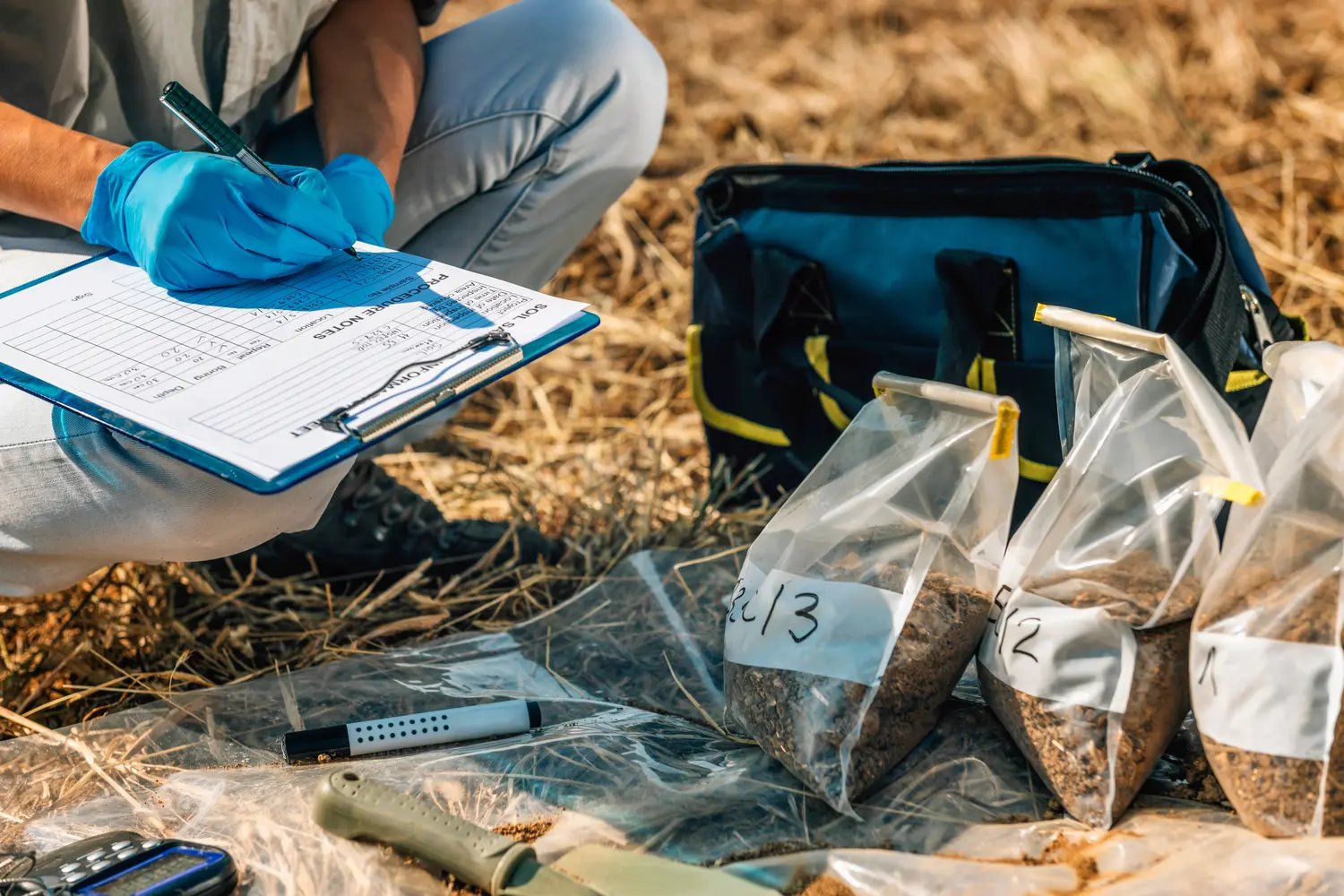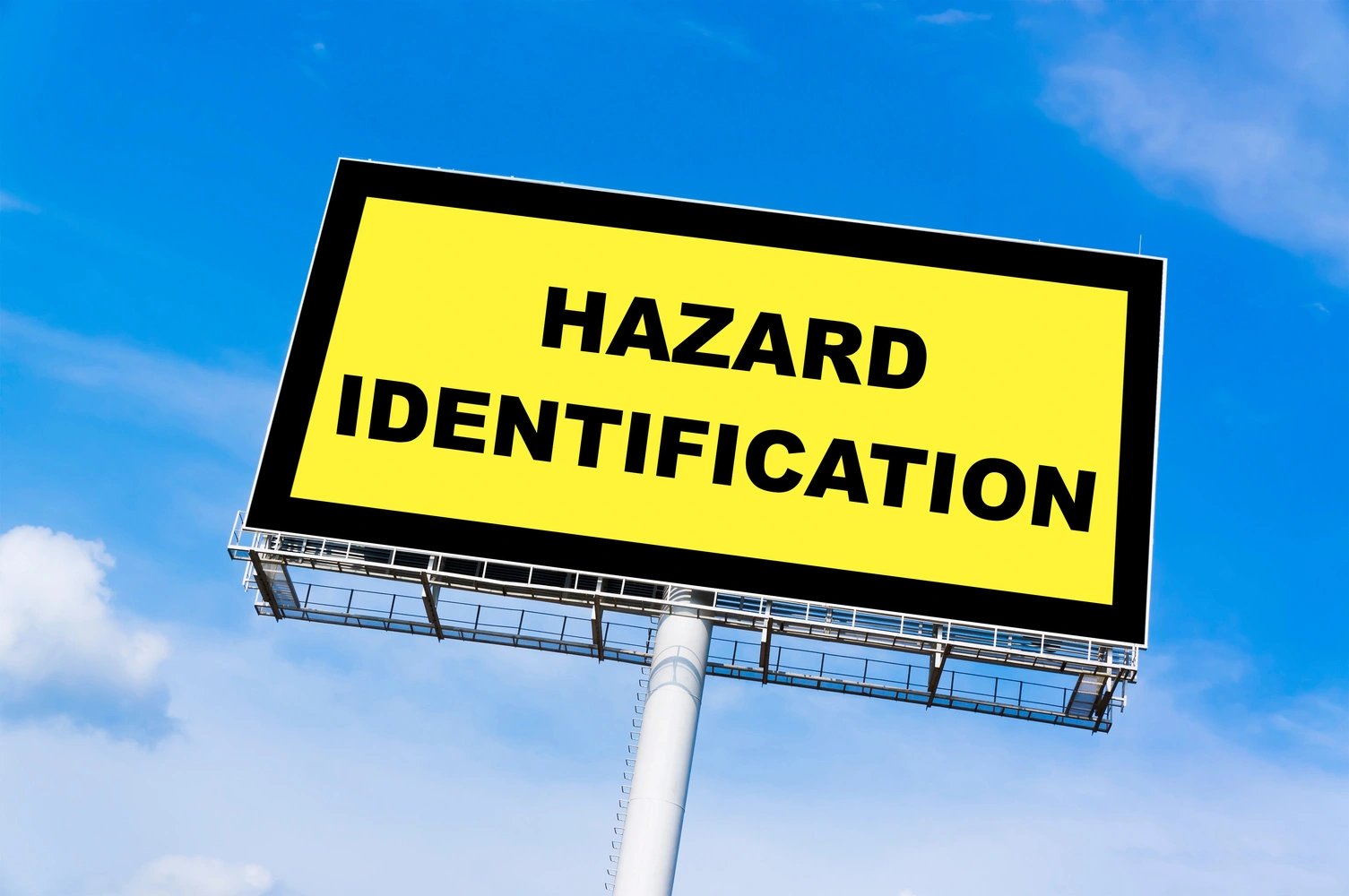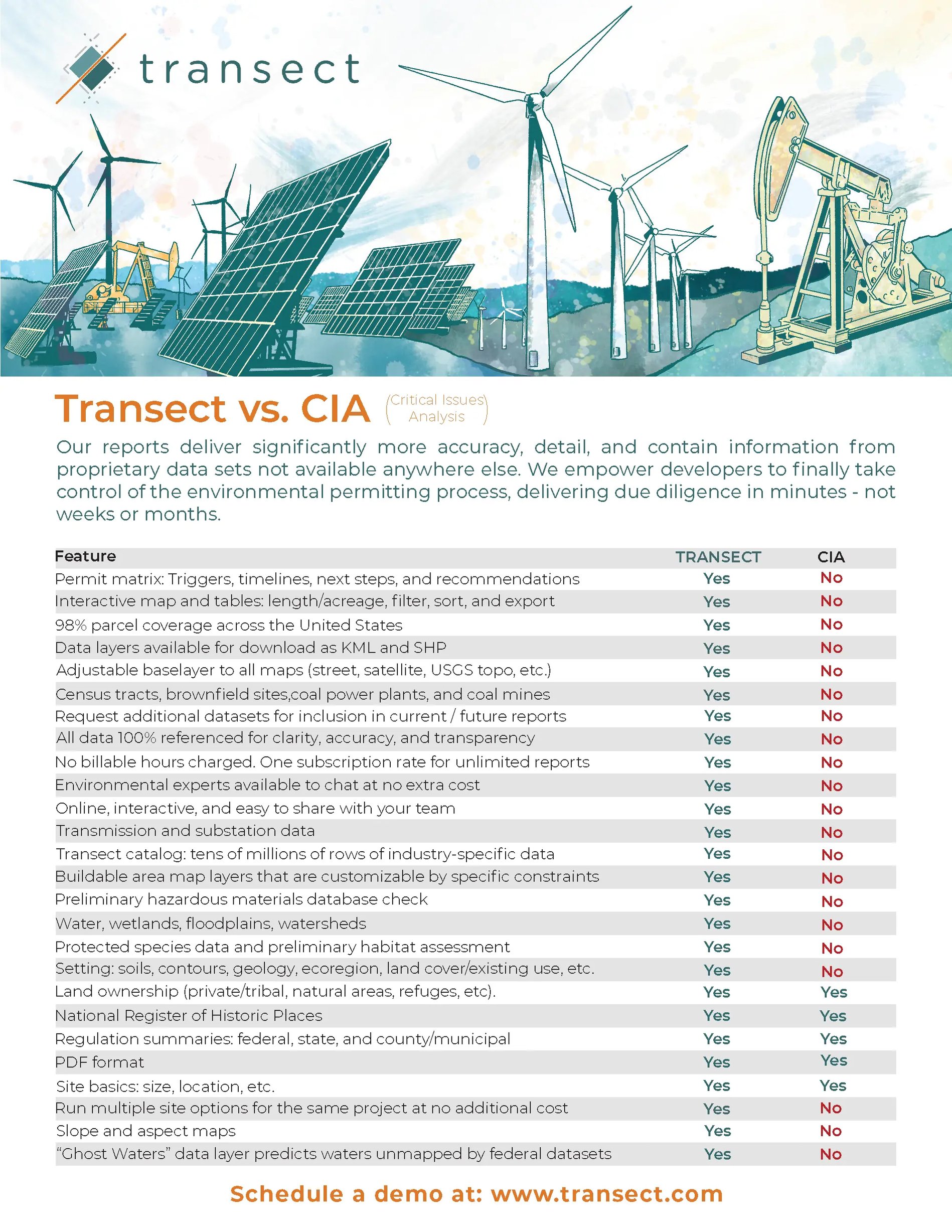Critical Issues Analysis
Free Permitting Checklist
Practical Tips to Avoid Environmental Risk on all Your Projects
Download our environmental permitting checklist to get a step-by-step list of ways to protect your project from the 9 most common environmental risks.
Download Your Checklist.webp?width=1500&height=1000&name=AdobeStock_240944542%20(1).webp)
What is a Critical Issues Analysis (CIA)?
Environmental Site Assessment
A critical issues analysis is an environmental assessment that reviews a project site for potential impacts on the environment. These assessments identify federally and locally regulated natural features and serve as frontline protection for our ecosystem. In addition to Critical Issues Analysis, these reports are also referred to as feasibility studies or desktop reviews.
Mitigation and Next Steps
For each environmental risk, the action taken to minimize impacts will vary. These actions will also vary by local, state, and federal requirements. Some risks only require a permit, and development can continue. Other projects may require efforts, such as installing proper storm drains on the site to collect runoff. Various agencies and organizations regulate these actions, and the environmental professional compiling the CIA recommends these next steps. The United States Code (U.S.C.) outlines many governing bodies, regulations, and mitigation efforts required to protect natural resources.

CIA Natural Resource Concerns
Endangered Species
Endangered species pose a significant threat to project developments. Threatened and endangered species receive both federal and state protections. The Endangered Species Act (ESA) is the principal federal regulation protecting endangered species. From this ruling, all permitting and regulatory actions for species are created. Once a species is listed on the Federal Register by the United States Fish and Wildlife Service (USFWS), these ESA protections are extended to them.
Each species may have specific permitting, protection, and mitigation requirements based on its unique status and needs. For example, the efforts taken to protect the Northern Long-Eared Bat may differ from that of the Dunes Sagebrush Lizard or the American Burying Beetle based on their listing status and habitats. Each protected species has a “critical habitat” protected for species conservation. These critical habitats contain the unique characteristics necessary for species survival, such as specific soils or vegetation. These critical habitats may require different efforts to protect them. These efforts are based on local regulations agencies, and organizations deem necessary to protect the region and species.
An endangered species presence on a site can delay or end a project altogether. Therefore, Identifying species on a site is crucial to project success. Additionally, staying up to date with local and federal regulations ensures that protection and permitting efforts for the site are correct.
Wetlands and Floodplains
Protected waters can drastically delay a project. As one of our most vital natural resources, waters are heavily protected at federal and local levels. Protections such as the Clean Water Act outline what waters are under federal jurisdiction, receiving extensive protections. These waters are identified on a project site following the federal definition for each water feature and recorded in a CIA. In addition to these federal protections, a CIA must identify state waters to ensure all compliance regulations are followed. Identification of these waters may include a floodplain analysis or wetland delineation at the hands of an environmental expert.
Soils
The soils on a project play a significant but less commonly discussed role in project development. Depending on the desired land use, the hydrography of soil may not support the structure's weight. Additionally, the chemical makeup of surrounding soil is temperamental, and runoff from these soils can impact surrounding waters- should their makeup be altered via discharge. When completing a CIA, soil samples and records will be searched to ensure the site can support the project.
Who Needs a Critical Issues Analysis?
Stakeholders
Stakeholders like to see a return on their investment and, ideally, on the initial project schedule. However, a CIA can rapidly derail their proposed project by months at a time. When shown earlier in the project timeline, a CIA can put stakeholders at ease about the viability of the project and the security of their investment. It can help paint an accurate estimate of when stakeholders can begin to see the project come to life, assuming the team effectively manages mitigation efforts and there are no environmental permitting delays.
Free Permitting Checklist
Practical Tips to Avoid Environmental Risk on all Your Projects
Download our environmental permitting checklist to get a step-by-step list of ways to protect your project from the 9 most common environmental risks.
Land Developers
Land developers must know what risks apply to their site and where they will rest on the project design. Land developers may think they are just looking at open space as construction projects begin. However, they may be looking at millions of dollars worth of environmental risks, all managed by the Department of the Interior (DOI), yielding significant consequences for damages. Whether developing a renewable energy project or a commercial real estate development, land developers face significant environmental risks on their sites.

Land Brokers
Land brokers can use a CIA to see the value of a property. This assessment will inform them if the property will serve a prospective buyer's needs or is too riddled with environmental risks for anyone to buy. Brokers can use this information to inform them of the ideal client for a property based on the current state of the land. A CIA tool can serve as much as a development tool as a marketing and selling tool. These reports serve as an asset assessment, but rather than looking for damage to a car-they look for protected natural features.
Who Completes These Due Diligence Reports?
Environmental Consultants
An environmental consultant typically performs a CIA. These experts identify these risks using their environmental knowledge, GIS tools, and various forms of technology. Once the study area has been identified, they will begin investigating and compiling their report. These reports will vary and be divided into the different protections that apply to the site. For example, one report may have a section labeled "Appendix A: the Endangered Species Act" and be more significant than Appendix B, which may focus on waters or historic protections. Each of these reports will vary in length and significantly vary regarding content. The formal site report takes weeks to months for consultants to complete.
Environmental Due Diligence Software
Environmental due diligence software, such as Transect, automates this process in minutes. Transmission lines, species information, and other environmental impacts present on a site are identified. This software also outlines the required permits and next steps correlating with each risk. This information system pulls from local and federal datasets and is expanded upon by internal experts. This comprehensive report is delivered in minutes containing more information than a traditional CIA, and can be saved in many different formats, such as KML or PDF.
How Does a CIA Impact Decision-Making and Timelines?
Critical issues analysis reports are a dreaded part of development for many land developers and typically come later in the project lifecycle. These documents inform teams if they have been wasting extensive hours and money on a project site with too many risks to proceed or if that will require them to spend more time and money on mitigation efforts. A CIA tells developers if they will see a significant return on their investment or if they will be spending the next few months trying to make a project right with little ROI. Until current management practices shift to a more automated and efficient approach to environmental risks, land developers will continue to be blindsided by what is on their CIA.
Automating this process decreases the critical issues analysis timeline, saving developers countless hours. Land developers would spend less time chasing non-viable sites should this report be used during the initial site selection stage. Access to this typically gatekept information allows sites to be selected based on applicability rather than fear of missing out on a lease. Additionally, project timelines will be fast-tracked as the required permits are visible early, so land developers can begin the lengthy application process as soon as desired.

Free Permitting Checklist
Practical Tips to Avoid Environmental Risk on all Your Projects
Download our environmental permitting checklist to get a step-by-step list of ways to protect your project from the 9 most common environmental risks.
